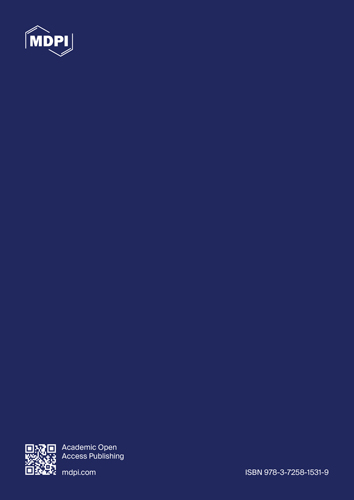Сб с 10 до 16
Maritime Autonomous Surface Ships/Морские автономные надводные корабли
Издание на английском языке
The book is devoted to the technology of digital Twins (DT) and their application in the marine industry. It examines how digitalization and new technologies such as cloud computing, the Internet of Things and artificial intelligence have contributed to the development of digital twins and their integration into various spheres. The origin of the digital twin concept is described, starting with the first examples such as NASA's Apollo program and Airbus developments. The ways of using DT in the marine sector are analyzed, including monitoring the condition of ships and optimizing processes. A four-level structure for digital twins is also proposed and the necessary conditions for their successful implementation are discussed. A scientific and methodological analysis of research on digital twins in the marine sector over the past 20 years, including the contributions of the authors and current topics, has been carried out. In conclusion, the main problems and prospects for the development of digital twins in the marine industry are considered.
Contents
About the Editors
Haitong Xu, LUcia Moreira, Xianbo Xiang and C. Guedes Soares
Maritime Autonomous Surface Ships
Reprinted from.: J. Mar. Sci. Eng. 2024,12, 957, doi:10.3390/jmse12060957
Nuwan Sri Madusanka, Yijie Fan, Shaolong Yang and Xianbo Xiang
Digital Twin in the Maritime Domain: A Review and Emerging Trends
Reprinted from.: J. Mar. Sci. Eng. 2023,11,1021, doi.:10.3390/jm.se11051021
Xuerao Wang, Yuncheng Ouyang, Xiao Wang and Qingling Wang
A Novel, Finite-Time, Active Fault-Tolerant Control Framework for Autonomous Surface Vehicle with Guaranteed Performance
Reprinted from.: J. Mar. Sci. Eng. 2024,12, 347, doi.:10.3390/jm.se12020347
Jingchen Wang, Qihe Shan, Tieshan Li, Geyang Xiao and Qi Xu
Collision-Free Formation-Containment Tracking of Multi-USV Systems with Constrained Velocity and Driving Force
Reprinted from.: J. Mar. Sci. Eng. 2024,12, 304, doi:10.3390/jmse12020304
Yuyang Huang, Wei Li, Jun Ning and Zhihui Li
Formation Control for UAV-USVs Heterogeneous System with Collision Avoidance Performance
Reprinted from.: J. Mar. Sci. Eng. 2023,11, 2332, doi:10.3390/jmse11122332
Yifang Sun, Dapeng Zhang, Yiqun Wang, Zhi Zong and Zongduo Wu
Model Experimental Study on a T-Foil Control Method withAnti-Vertical Motion Optimization of the Mono Hull
Reprinted from.: J. Mar. Sci. Eng. 2023,11,1551, doi:10.3390/jmse11081551
Yihan Niu, Feixiang Zhu, Moxuan Wei, Yifan Du and Pengyu Zhai
A Multi-Ship Collision Avoidance Algorithm Using Data-Driven Multi-Agent Deep Reinforcement Learning
Reprinted from.: J. Mar. Sci. Eng. 2023,11, 2101, doi:10.3390/jmse11112101
Taewoong Hwang and Ik-Hyun Youn
Development of a Graph-Based Collision Risk Situation Model for Validation of Autonomous Ships' Collision Avoidance Systems
Reprinted from.: J. Mar. Sci. Eng. 2023,11, 2037, doi:10.3390/jmse11112037
Muhammad Yasir, Abdoul Jelil Niang, Md Sakaouth Hossain, Qamar Ul Islam, Qian Yang and Yuhang Yin
Ranking Ship Detection Methods Using SAR Images Based on Machine Learning and Artificial Intelligence
Reprinted from.: J. Mar. Sci. Eng. 2023,11,1916, doi:10.3390/jmse11101916
Shengzhe Wei, Yuminghao Xiao, Xinde Yang and Hongdong Wang
Attitude Estimation Method for Target Ships Based on LiDAR Point Clouds via An Improved RANSAC
Reprinted from: J. Mar. Sci. Eng. 2023, 11, 1755, doi:10.3390/jmse11091755
Haitong Xu and C. Guedes Soares
Data-Driven Parameter Estimation of Nonlinear Ship Manoeuvring Model in Shallow Water Using Truncated Least Squares Support Vector Machines
Reprinted from.: J. Mar. Sci. Eng. 2023,11,1865, doi:10.3390/jmse11101865




